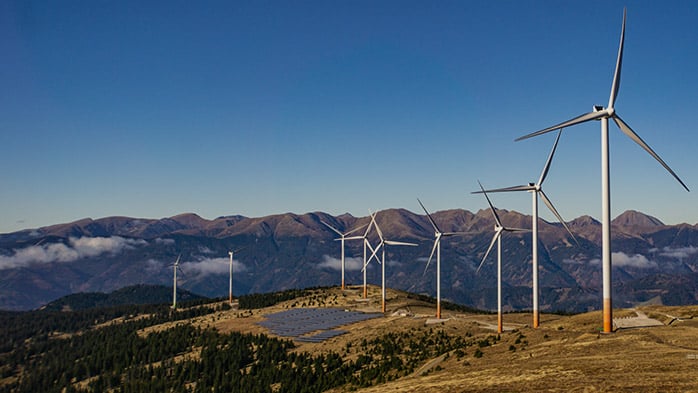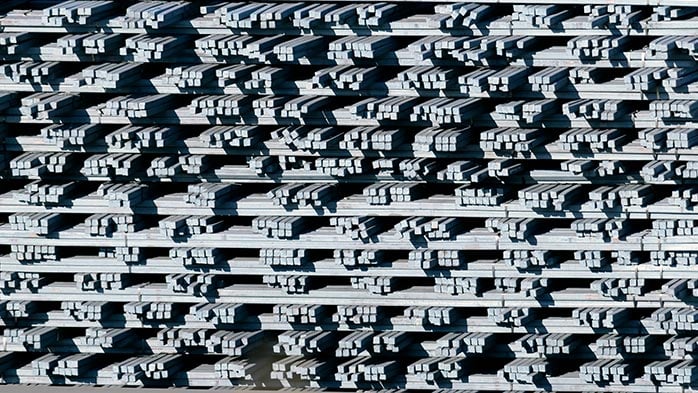From mid-2020 through 2021 Q1, CRU’s US Midwest HR coil price benchmark increased by over 180% or over $800 /s.ton to reach a new record high, at least in nominal terms, of $1,240 /s.ton on 10 March.
This most recent upward price cycle was initially rooted in the demand rebound which commenced as the Covid-19 lockdowns started to ease in mid-2020 Q2. A series of supply limitations then propelled prices much higher.
Pandemic hits sheet demand and production
Economic activity fell rapidly after the initial Covid-19 outbreak, as many global markets gave various ‘shelter in place’ orders with only essential business operations allowed. The subsequent collapse in steel demand meant steel mills were forced to severely curtail output. Electric arc furnace-based producers (EAF) are flexible in their operations and were able to run in shifts as needed or take multiple days of downtime. The blast furnace (BF) producers are inflexible and quickly idled furnaces, an expensive proposition. Moreover, it can generally take weeks if not months to bring a furnace back online, depending on how long the furnace was idled.
As the lockdowns started to ease in mid-May 2020, steel sheet consumption started to rise off the bottom. Yet overall industrial activity was well below pre-pandemic levels and as such, inventories throughout the supply chain were excessive. This allowed mills the option to assess the market risk of restarting production, and most concluded that expensive restarts were not prudent.
Real recovery in demand
The price of HR coil eventually bottomed in mid-August at $437 /s.ton, a 25% drop from the pre-pandemic high of $584 /s.ton. At this time, sheet demand continued to rise from the 2020 Q2 lows, led by a strong rebound in automotive production. Inventories, meanwhile, had started to fall more rapidly. Steel Market Update, part of CRU, tracks inventory at service centres. Inventory, based on the daily shipping rate, was 52.9 in 2020 Q1 and rose to an average of 70.1 in 2020 Q2 before rapidly falling to 48.6 days of supply in August.
Buyers caught short on inventory as production struggles to return
Inventories had fallen back as demand increased at a faster rate than the production of steel sheet. And while the idled BF-based mills were coming back online to satisfy this rising demand in 2020 H2, various production disruptions impacted multiple steel mills. Some came from normal operational issues or technical issues, one mill had an explosion which limited production for multiple months, and other mills had outbreaks of Covid-19. Adding to this, NLMK Pennsylvania, a slab roller, was extremely limited due to a strike, while other slab rollers suddenly found their slab supply limited in 2020 Q4 due to a political decision on quotas announced without warning.
These disruptions slowed or paused steel production at multiple facilities, limiting the ability of mills to increase shipments, even though prices by mid-October were nearly 50% higher than the recent bottom. With production unable to keep up with demand, inventories fell to a low of just 40 shipping days of supply in November 2020.
On top of limited domestic supply, imports were minimal and not competitive for domestic buyers prior to 2021 Q1. This was because global prices had risen alongside these same post-lockdown fundamentals.
Lead times extend as demand rises and inventories fall
Partly due to disruptions as well as rising underlying demand and the need to build inventory, strong order rates for steel led to rapidly expanding lead times. For HR coil products, lead times were below four weeks in early August 2020. They eventually rose to over 9 weeks by early March. The result of expanding lead times was the necessity of buyers to further increase orders at mills, just to keep pace. Due to the production disruptions and increased orders, mills were producing at 100% of effective capacity, allowing pricing power to shift firmly toward the mills. Buyers were prepared to pay, quickly revealing the price inelasticity of steel at least in this timeframe.
Eventually, these supply disruptions started to fade while idled mills continued to come back online through 2021 H1. Slab supplies were renewed in 2021 Q1 and the strike at NLMK ended with production normalising in March 2021. Ongoing supply disruptions remain an upside risk to price, especially as maintenance at some facilities has been delayed which has created a risk for new unplanned production outages to further disrupt the supply of steel sheet. Also, as maintenance is carried out, production can be further limited by unplanned issues in restarting furnaces.
Inventory build as portion of demand to diminish
We continue to expect sheet demand will rebound from 2020 at a rapid rate through 2023, yet inventory building as a portion of demand will ease. Ultimately, sheet demand in the USA will take time to fully return to pre-pandemic levels. As supply normalises and inventory building as a portion of demand slows, sheet prices will fall back from record highs, so long as no new production disruptions emerge.
Import impetus
Rising supply is currently coming from not only domestic producers that experienced operational issues or idled furnaces, but also from producers abroad. In fact, import arrivals started to pick up in February and due to the record premium of sheet prices in the USA versus other markets, we expect imports will continue to regain share of the US market through 2021 Q3.
Supply will also step higher as newly built capacity comes online later this year in both the USA and Mexico. In the USA, Steel Dynamics is set to commission a 2.7 Mt EAF facility in Sinton, Texas around mid-year. The other major new source of sheet supply to the North American market is the commissioning of two new hot strip mills in Mexico. These mills, owned by ArcelorMittal and Ternium, will produce nearly 7 Mt of HR coil.
In the balance
At CRU, we are closely watching the balance of mill shipments compared to the rebound of industrial activity in key sheet-intensive markets. At some point, the rebound in steel production will clearly surpass the rebound in industrial activity. Additionally, we are watching the spread of HR coil prices in the US versus other markets, the subsequent competitiveness of import offers, and global steelmaking costs, among other things. These are critical determinants of our domestic price forecasts.
The critical determinants of price direction and speed of movement in the sheet market today are primarily related to acceleration of mill shipments versus inbound orders, how supply chain inventory levels change, and how rapidly import arrivals increase over the next several months.
Steel prices will eventually fall back from the current supply deficit environment towards a market more related to a historic margin over steelmaking costs. At CRU, we continuously evaluate and incorporate changes to these market fundamentals, among others, into our monthly price forecast updates.
















